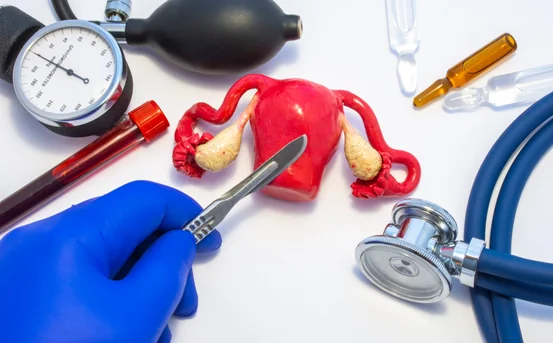Fever is one of the most common symptoms prompting individuals to seek medical care. While most fevers are temporary and caused by identifiable infections, some cases persist without an obvious source. When a fever remains unexplained after initial investigation, it is termed as undiagnosed fever or fever of unknown origin (FUO). Diagnosing this condition is one of the most challenging tasks in modern medicine, requiring a systematic and multidisciplinary approach. understanding of the diagnosis for undiagnosed fever.
Understanding Undiagnosed Fever
An undiagnosed fever typically refers to a temperature above 38.3°C (101°F) that persists for more than three weeks without a clear diagnosis after at least one week of inpatient or outpatient evaluation.
There are four major categories that can contribute to FUO:
- Infections
- Non-infectious inflammatory diseases
- Neoplasms (cancers)
- Miscellaneous or undetermined causes
A careful diagnosis involves differentiating between these categories through a detailed clinical, laboratory, and imaging work-up.
Step-by-Step Diagnosis for Undiagnosed Fever
- Detailed Patient History :- The cornerstone of diagnosing undiagnosed fever begins with an in-depth medical history. The clinician explores:
- Duration and pattern of fever (intermittent, continuous, relapsing)
- Associated symptoms (fatigue, weight loss, night sweats, rash, etc.)
- Recent travel history or exposure to endemic diseases
- Occupational risks and hobbies
- Immunization history
- Contact with sick individuals or animals
- Medication and drug use
Sometimes, subtle details like travel to rural areas or consumption of unpasteurized dairy can point toward specific infections.
- Physical Examination :- A comprehensive physical examination often provides the first tangible clues. Doctors will look for:
- Lymph node enlargement
- Skin rashes
- Joint swelling or tenderness
- Abdominal tenderness or enlargement
- Signs of endocarditis or vascular involvement
Findings from physical exams help direct the next steps in diagnostic testing.
- Initial Laboratory Tests :- Routine blood and urine tests help evaluate the most likely causes and narrow down further investigations. These include:
- Complete Blood Count (CBC)
- Erythrocyte Sedimentation Rate (ESR) and C-Reactive Protein (CRP)
- Liver and kidney function tests
- Blood cultures
- Urinalysis and urine culture
- Tuberculosis (TB) screening
- Malaria and typhoid tests (if relevant)
Abnormalities in these results often offer initial direction toward a bacterial, viral, or inflammatory cause.
- Advanced Blood Work and Serology :- If basic labs are inconclusive, additional specialized tests may be performed:
- Autoimmune markers like ANA, RF (for conditions like lupus or rheumatoid arthritis)
- HIV, hepatitis B and C serology
- Brucella, Leptospira, CMV, and Epstein-Barr virus testing
- Fungal cultures
- PCR-based tests for rare or slow-growing infections
These tests aim to detect chronic, latent, or uncommon infections and autoimmune disorders.
- Imaging Studies :- Modern imaging tools help identify internal sources of fever that aren’t obvious on external exam:
- Chest X-ray :– for pneumonia, tuberculosis, or mediastinal masses
- Ultrasound Abdomen :– for liver abscess, splenomegaly, or gallbladder disease
- CT Scan (Chest/Abdomen/Pelvis) :– for tumors, infections, abscesses
- MRI :– for neurological or soft tissue involvement
- PET Scan :– helpful in detecting hidden infections or cancers
These scans provide visual confirmation of underlying pathology contributing to persistent fever.
- Biopsy and Invasive Procedures :- If imaging suggests a specific organ involvement but fails to confirm a cause, tissue sampling may be necessary:
- Lymph node biopsy
- Bone marrow aspiration and biopsy
- Liver or kidney biopsy
- Lumbar puncture for cerebrospinal fluid (CSF) analysis
These procedures help in diagnosing hematologic malignancies, granulomatous diseases, or central nervous system infections.
- Hospital Observation & Monitoring :- When outpatient diagnosis fails, patients may be admitted for continuous monitoring. During hospitalization:
- Fever pattern is closely observed
- Serial blood samples are drawn
- Daily physical exams help catch evolving signs
- Empiric treatments are avoided unless absolutely necessary to prevent masking the cause
This “watchful waiting” often leads to the emergence of diagnostic clues over time.
- Interdisciplinary Collaboration :- Cases of undiagnosed fever may involve input from multiple specialties such as:
- Infectious Disease specialists
- Rheumatologists
- Oncologists
- Hematologists
- Neurologists
Collaborative diagnostics help uncover rare disorders or atypical presentations of common illnesses.
Common Diagnoses Found in FUO
Despite the complexity, many undiagnosed fevers are eventually attributed to one of the following:
- Infections :- TB, endocarditis, intra-abdominal abscess, HIV, EBV
- Autoimmune diseases :- Adult-onset Still’s disease, lupus, vasculitis
- Cancers :- Lymphomas, leukemia, renal cell carcinoma
- Miscellaneous :- Drug fever, factitious fever, thyroiditis
In about 10–20% of cases, no definitive cause is ever found, but many patients eventually recover spontaneously or stabilize.
When to Seek Help
You should consult a healthcare provider if:
- Fever persists beyond 7–10 days
- It is accompanied by rapid weight loss, extreme fatigue, or night sweats
- You have underlying health conditions (e.g., diabetes, HIV, recent surgery)
- You’ve recently traveled to areas with endemic infections
Early evaluation and proactive diagnosis can prevent complications and aid timely treatment.
Conclusion
Diagnosing an undiagnosed fever is like solving a medical puzzle that requires patience, detailed assessment, and sometimes even intuition. While the journey may seem prolonged and uncertain, advances in diagnostic tools and the availability of expert medical care have made it increasingly possible to find answers.
A structured and holistic diagnostic approach ensures not just accurate detection but also appropriate treatment, improving patient outcomes and quality of life. If you or someone you know is battling a persistent unexplained fever, don’t delay seeking expert medical evaluation for timely diagnosis and peace of mind.























